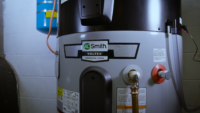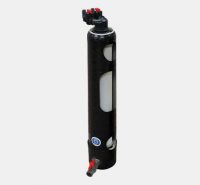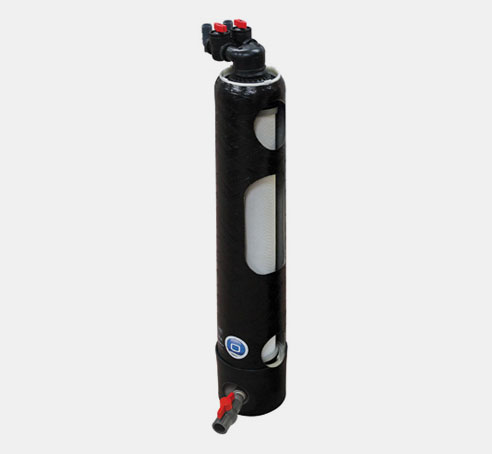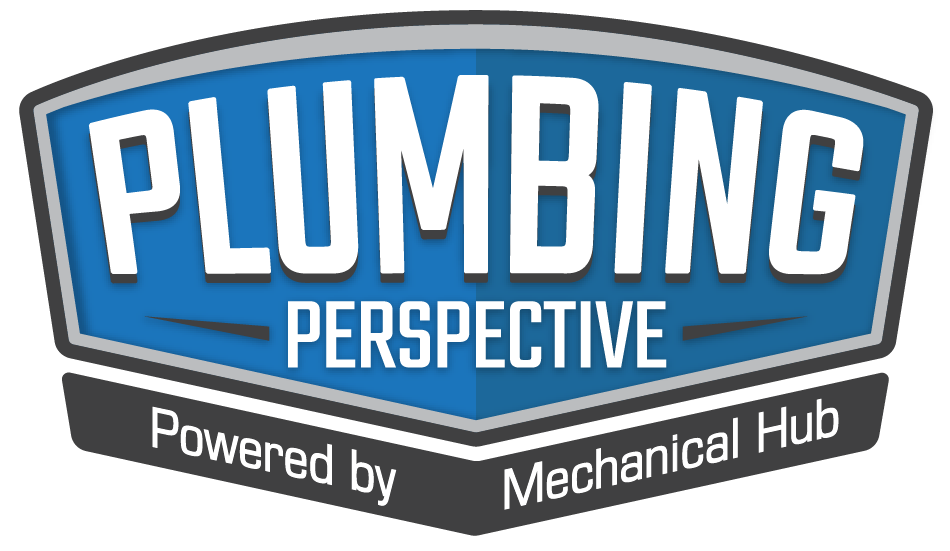The tool will now allow for quick and easy sizing of commercial heat pump water heaters A. O. Smith, a leader in water heating and water treatment, announces the addition of commercial heat pump water heater (HPWH) sizing capabilities to its Pro-Size™ tool. This update makes A. O. Smith the only manufacturer to include commercial Read more
water treatment

The tool will now allow for quick and easy sizing of commercial heat pump water heaters
A. O. Smith, a leader in water heating and water treatment, announces the addition of commercial heat pump water heater (HPWH) sizing capabilities to its Pro-Size™ tool. This update makes A. O. Smith the only manufacturer to include commercial HPWHs as part of its virtual sizing tool, currently.
The tool can size all commercial products that A. O. Smith offers and can size for almost every type of commercial building, including hotels, office buildings and more. As a one-stop shop, the tool is set to be a time saver for customers who previously required multiple tools to complete different types of projects. Additionally, this new feature provides recommendations for both heat pump water heaters and the corresponding storage tank, reducing the challenges associated with designing a heat pump system.
“Prior to this update, customers had to contact A. O. Smith directly to size commercial HPWHs, which required an investment of time that customers often don’t have. Now, the process can be completed in a few short minutes,” said Ryan Schewe, A. O. Smith application engineering manager. “As commercial heat pumps become an increasingly critical part of the decarbonization movement, it is essential that engineers have quick and easy access to the information they need to properly specify this technology. Now our customers can feel empowered to size commercial HPWHs for their projects.”
Commercial projects that require heat pump technology per the building code, heat pump design specs as part of the building design process or low operating cost domestic hot water systems, can now specify commercial HPWHs with only a few clicks. The improved ease of sizing these units makes it easier for customers to adopt commercial heat pump technology and allows them to take advantage of local HPWH rebates.
This advancement is the first in a series of improvements being made to A. O. Smith’s Pro-Size tool. Customers can expect additional updates to the tool in the coming months. To access the Pro-Size tool and learn more about A. O. Smith’s product offerings, visit www.hotwater.com. Customers can contact A. O. Smith for assistance in using the Pro-Size tool at www.hotwater.com/about-us/contact.

State, local dignitaries honor project that will protect the city from natural flooding disasters A. O. Smith Corporation (NYSE: AOS), a leader in water heating and water treatment, will host a celebration on Thursday, Aug. 25, at 9 a.m. CDT, marking the completion of a nearly 7,000-foot earthen berm, flood gates and pumping stations surrounding Read more
State, local dignitaries honor project that will protect the city from natural flooding disasters
A. O. Smith Corporation (NYSE: AOS), a leader in water heating and water treatment, will host a celebration on Thursday, Aug. 25, at 9 a.m. CDT, marking the completion of a nearly 7,000-foot earthen berm, flood gates and pumping
stations surrounding the A. O. Smith Ashland City manufacturing plant, the city’s water treatment facility and the Cumberland Electric Membership Corporation substation. The 20-month project is the culmination of a 12-year collaboration among the U.S. Army Corp of Engineers, the State of Tennessee, Tennessee Department of Transportation, Cheatham County, town of Ashland City and A. O. Smith.

Local government officials, along with the Company’s leadership team, will gather for a ribbon cutting ceremony to celebrate the reopening of a portion of the road that has been closed for more than a year and runs adjacent to the A.O. Smith plant. Tennessee Deputy Governor Butch Eley; Ashland City Mayor J. T. Smith; and Stan Settles, representing Senator Bill Hagerty’s office, will be in attendance.
“I couldn’t be more pleased to witness the progress and completion of this project,” said Mayor Smith. “It was truly a team effort and one that would not be possible without the commitment of A. O. Smith. These improvements will help keep our local businesses, residents and homes safe from future flooding disasters.”
In May 2010, a record 13.57 inches of rain fell in a 36-hour period over Middle Tennessee, causing the Cumberland River to crest 52 feet. Roughly 1,700 feet east of the river’s banks, A. O. Smith’s Ashland City plant was inundated, shutting down operations for four weeks and costing the Company $66 million to fully recover. The project will ensure Ashland City, its water treatment facility, the local power utility’s substation, and A. O. Smith operations will be safe from the next 500-year flood.
The $16.6 million project was funded by a combination of public and private entities. “This project is a prime example of one of our company’s values in action – ‘A. O. Smith will be a good citizen’ – working to protect the people who live and work in the city we’ve called home since 1961,” said Dave Warren, president and general manager of the Company’s North America Water Heating business, headquartered in Ashland City. “This project was vital to the community and our long-term sustainability in this town.”

Water-Right®, a leading independent original equipment manufacturer (OEM) in the water treatment industry, is proud to announce its latest product offering ONE™, a cartridge tank filter system specifically designed to reduce contaminants while maintaining high flow rates. Perfect for residential and light-commercial applications, the large capacity is certified for the removal of several contaminants including Read more
Water-Right®, a leading independent original equipment manufacturer (OEM) in the water treatment industry, is proud to announce its latest product offering ONE™, a cartridge tank filter system specifically designed to reduce contaminants while maintaining high flow rates. Perfect for residential and light-commercial applications, the large capacity is certified for the removal of several contaminants including lead, PFOA/PFOS and cyst reduction.
“Water quality and eliminating emerging contaminants is top of mind for today’s consumers,” said Kurt Gruett, president of Water-Right®, Inc. “The ONE™ cartridge filter was designed to help give people peace of mind their water is safe for consumption.”
 ONE™ carbon block filters have a certified capacity up to 50,000 gallons on lead, PFOA/PFOS chemicals and cyst reduction. The innovative filter is considerably larger than the average in-home system and is specifically designed for higher flow rates, higher contaminant retention capacities and extended replacement frequency. The cartridge features easy access and requires no special tools for service and replacement.
ONE™ carbon block filters have a certified capacity up to 50,000 gallons on lead, PFOA/PFOS chemicals and cyst reduction. The innovative filter is considerably larger than the average in-home system and is specifically designed for higher flow rates, higher contaminant retention capacities and extended replacement frequency. The cartridge features easy access and requires no special tools for service and replacement.
“Water-Right has a unique top and bottom cap to our filter cartridges for easier maintenance and installation,” Gruett explained.
The cartridge’s exclusive “stand off” leg allows debris to clear from the filter and tank through a bottom drain, further extending the product’s lifecycle.
“In addition, we have been approved for our own WQA certification when paired with a WaterCare® or Evolve® system enabled with a service alarm Performance Indication Device (PID), the ONE™ carbon block filter is certified up to 100,000 gallons of use,” Gruett said.
The ONE™ filter system is currently available for purchase through Water-Right’s complete product lines. For additional information, contact a Water-Right regional sales manager, call Water-Right at 800-777-1426 or visit water-rightgroup.com.

We are approaching the end of the 2018-2019 heating season in North America, although homeowners in the colder northern sections of the United States and throughout Canada will likely need their heating systems for another two, maybe even three months. As you know, our long cold seasons can take a heavy toll on hydronic heating Read more
We are approaching the end of the 2018-2019 heating season in North America, although homeowners in the colder northern sections of the United States and throughout Canada will likely need their heating systems for another two, maybe even three months. As you know, our long cold seasons can take a heavy toll on hydronic heating systems. Here’s a rundown on some of the more common boiler and component problems facing home and business owners and what can be done to remedy them.
 Radiator cold spots
Radiator cold spots
If your home’s or business’s radiators are not uniformly hot throughout, the following could be the culprit:
- air in the piping and components;
- a malfunctioning component or part, such as a circulator or a valve; and, finally, our “favorite” villain —
- rusty or corroding system pipes that ultimately fill the radiators with magnetite.
What is magnetite? As air and water mix inside the pipes of an untreated hydronic heating system, an iron oxide sludge, called magnetite, forms. As these small (.0003-micron) particles circulate and accumulate inside the system, they begin to adversely affect heat-transfer rates and boiler efficiency. Eventually, iron oxide buildup can lead to equipment damage and/or failure, resulting in costly repairs. Just how extensive is this problem? A recent study analyzing returns to European pump manufacturers found that nearly 70 percent of circulator returns consisted of failures triggered by iron-oxide buildup. The study also showed that more than 95 percent of the debris in hydronic heating systems consists of iron oxide*.
The fix? To eliminate air in the system, first try bleeding your radiators. But if the cold-spot problems persist, bring in a professional plumbing and heating contractor to:
- conduct a full system inspection;
- upgrade failing parts;
- fully cleanse the system with a magnetic dirt filter, as well as a chemical cleaner, such. This maintenance should remove not only the rust, but also all the other debris.
Noisy system
Maybe your boiler rattles every time it rolls into action. Maybe you are routinely treated to a chorus of bangs, gurgles, whistles and rumbles from elsewhere in the system. Regardless, such noise goes beyond mere annoyance; it might indicate more serious problems. Once again, air as well as a buildup of limescale are the most common culprits.
The fix? To eliminate the pipe noise, get rid of any trapped air by bleeding your radiators. If that doesn’t work, call a professional to flush the entire system of limescale and air. If the noise originates in your boiler, your service technician will work to remove limescale in the heat exchanger.
Leaks and drips
Water leakage from your boiler is never a good sign. Leakage usually means a breakdown is imminent. It’s a simple problem to spot. Is there any water beneath the boiler or around its pipes and tank? Causes can range from broken parts to corroded pipes.
The fix? Whether the problem stems from a damaged component or simple wear and tear, there’s only one answer for leaks and drips: Call a professional to check your boiler.
On the subject of leaks, it is often questioned whether cleaning chemicals cause leaks within hydronic systems. The answer to this is — no, if, of course, you are using correctly formulated chemicals, which includes surfactants, dispersants, and inhibitors that make it pH neutral. The surfactants and dispersants help dislodge, lift and move the corrosion, while the inhibitors protect the vulnerable metals during cleaning.
 Complete protection
Complete protection
The rising popularity of high-efficiency boilers and the increased use of high-efficiency ECN (electronically commutated motors) pumps with these boilers, have helped lower fuel bills. That’s the good news. The downside: both of these positive trends can also create system-performance headaches for home and business owners. We will explore the why behind these problems in a future blog. For now, understand that both trends can lead to premature system and component failure because of the buildup of iron oxide sludge (magnetite) and other nonmagnetic debris. Both can rob hydronic heating systems of their high efficiency and superior performance.
The solution is magnetic dirt filtration, along with regular and proper system cleansing and protection. This is the only way to prevent the buildup of magnetite and the costly problems it can cause.
GUEST BLOGGER: Brian Salem, ADEY Western/Central North America area sales manager.
 Growing up in his Dad’s plumbing company, Brian has a wealth of experience within the HVAC/P industry. Professionally, Brian has been in the industry since 2004 and joined ADEY in 2017 – his role began as OEM Manager for North America but due to ADEY’s growing network of North American Reps, Brian has now taken the reigns as ADEY’s Western/Central North America Area Sales Manager. Brian Salem: brian.salem@adey.com, (847) 440-6665
Growing up in his Dad’s plumbing company, Brian has a wealth of experience within the HVAC/P industry. Professionally, Brian has been in the industry since 2004 and joined ADEY in 2017 – his role began as OEM Manager for North America but due to ADEY’s growing network of North American Reps, Brian has now taken the reigns as ADEY’s Western/Central North America Area Sales Manager. Brian Salem: brian.salem@adey.com, (847) 440-6665
